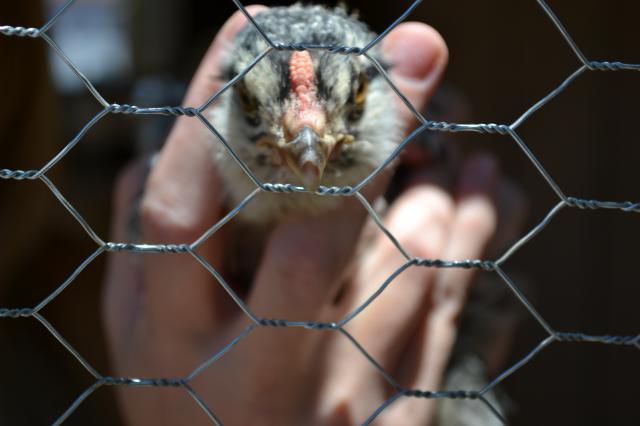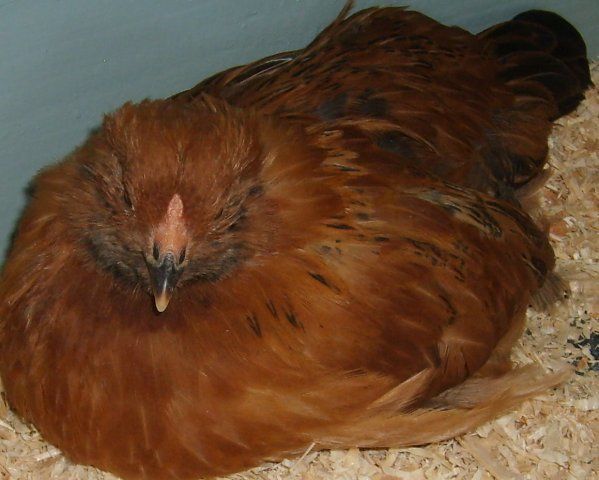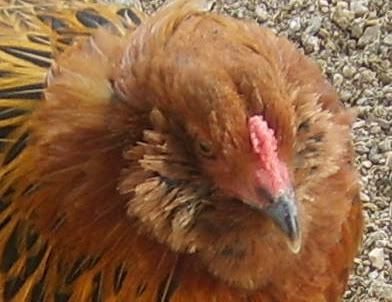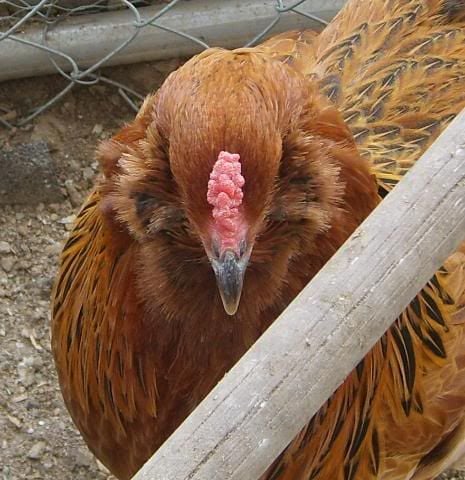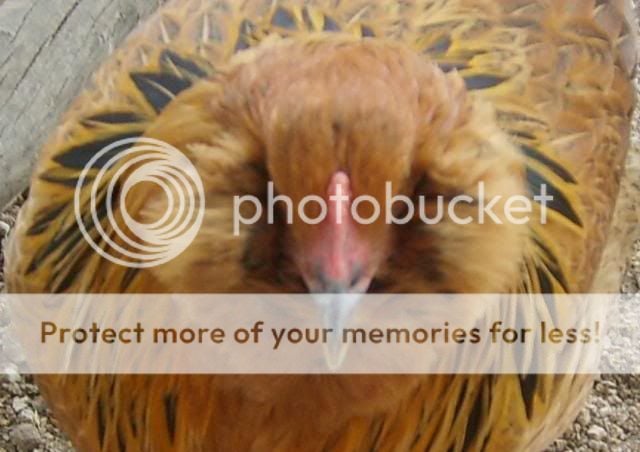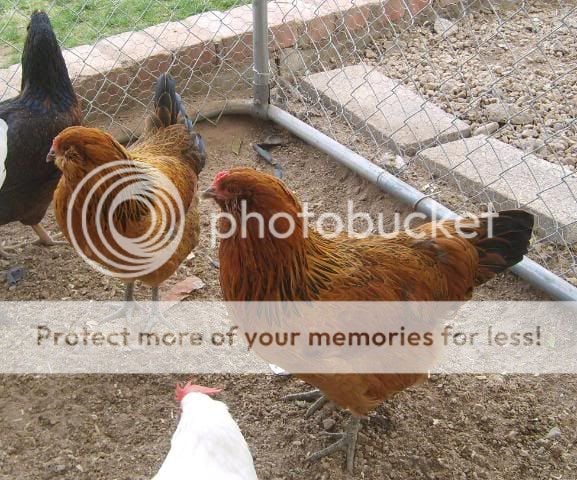Quote:
Young EE pullets can have 3 distinct rows in their comb, but their combs are much smaller than a roo's 3 row pea comb
I wish this pic was clearer, but this pullet's comb had 3 distinct rows (they became more distinct as she grew - only 6-7 weeks old here)
https://www.backyardchickens.com/forum/uploads/19548_chickens_011.jpg
Here is the same pullet at 19 weeks (close to laying age); Her middle row has started becoming quite prominent. It has grown into a large central row, but you can still see the 3 rows. The 3 rows were the same size when she was younger (the middle row was not always prominent in size).
http://i592.photobucket.com/albums/tt4/manddteach2/gardenchickens005comb.jpg
Here she is 2 1/2 weeks later (21 1/2 weeks and now laying) Her middle row (and entire comb) continued growing and you can no longer see the 3 distinct rows.
http://i592.photobucket.com/albums/tt4/manddteach2/gardenchickens003-1.jpg
Here is her sister with the single row comb:
http://i592.photobucket.com/albums/tt4/manddteach2/gardenchickens004comb.jpg
And the two of them all grown up and definitley hens:
http://i592.photobucket.com/albums/tt4/manddteach2/gardenchickens002-5.jpg
Edited to Add: The OP's chick is a cockerel -- the comb is too large and pink to belong to a pullet of that young age.
Well, to me, those are not three distinct rows in the pullet's younger photo. When I say distinct, I'm talking more about the photos of thewhite/black cockerel in this thread. Compared to your pullet, his three rows are more defined, whereas your pullet's there rows more closely fit (to my eye) my description above of "very, very small unevenness in the comb surrounding it".
What I'm essentially saying is that the OP's chick's comb is not only too large, but too defined, as compared to your bird's (and I agree with your "edited to add" comment).
Yes - I agree that the OP's chicks' comb is much more defined than my 6-7 week old chick, but my pullet's comb did become more defined as she grew older - just not large like a male's would have been - hers was on a much smaller scale.
I tried to explain in my post that her rows became more distinct as she aged. That photo at 6-7 weeks was just the start of her comb - it was still quite small and flat then. The next photo I took that shows her comb was not taken till she was 19 weeks, and by then, the middle row had already gotten bigger because she was getting close to laying age. You can see how in the 3rd photo how it changed even further in the next couple weeks. Between the time those 2 photos were taken, she did have 3 distinct, level rows, but I did not know I would need photos of it later and do not have photos of her in that time period.
Here's a link to my page I constructed that year (over 2 years ago) - it includes my first 3 Easter Eggers and unfortunately, I did not specifically take pics of their combs until 19 months of age, because at that time I assumed the 3-row pea comb was normal in a pullet, until they reached a much later age:
https://www.backyardchickens.com/web/viewblog.php?id=19548-from-chicks-to-pullets-to-hens
I've raised many Easter Eggers since that first batch and I'd say the majority of the Easter Eggers with the wider, 3-row comb are males, but not always. I just wanted to let others know it's not a hard and fast rule, so that they don't accidentally rehome their pullets because of a misassumption.
Basically, I"m just saying that if a young EE has a 3-row comb, you need to take the size and color of the comb along with the age of the chick into consideration too. I also agree with
Pele: There are other factors to take into consideration too, when sexing EEs. Color pattern is a biggie. Sometimes, the comb alone is not enough for sexing an EE, but sometimes it is (the OPs chick for example - it can be sexed by comb alone, because it is very young and has an overly large 3-row pea comb).






